Why Tales of the City is the ultimate LGBT fantasy
 Netflix
NetflixArmistead Maupin created a visionary portrait of queer community with his San Francisco-based franchise. Now it’s back in a TV reboot, and as inspiring as ever, writes Hugh Montgomery.
They make unlikely buddies: but a few years ago, Armistead Maupin, the celebrated author of the Tales of the City novels, became friends with George RR Martin, the fantasy writer whose A Song of Ice and Fire series was turned, of course, into TV’s Game of Thrones. “We lived in Santa Fe at the time. We’d sit around talking about how much we hated the pressure of having to keep telling the stories,” Maupin tells BBC Culture. So it seems strangely fitting that just weeks after the adaptation of Martin’s saga ended, with some controversy, having overtaken the plot of the books, Maupin’s franchise should now be returning to the small-screen – in a new Netflix reboot that also dares to reach beyond its source material. And while it may not offer ice zombies or dragons, it is just as glorious a fantasy.
More like this
For the uninitiated, the Tales of the City stories date back to the mid-70s, when Maupin, a young émigré to San Francisco from a conservative Southern family, started channelling the exuberance of the culture he found there into serialised fiction, published in newspaper columns, first in the Pacific Sun in Marin County, then in the San Francisco Chronicle.
It all began with Mary Ann Singleton, another young émigré to the city from a conservative family, moving into the bohemian apartment building of 28 Barbary Lane. Presided over by the transgender, kaftan and cannabis-loving landlady Mrs Madrigal, it included lesbian firecracker Mona Ramsey and gay sweetheart Michael ‘Mouse’ Tolliver, as well as self-iring straight stud Brian Hawkins, among its residents.
Maupin continued the columns, duly collected into novels, until the late 80s, with his characters ageing in real time. Then after a gap of 18 years, he picked up the story once more in the late 00s, with three more books, which found Mary Ann and co now well into middle age, and Mrs Madrigal celebrating her 90th birthday.
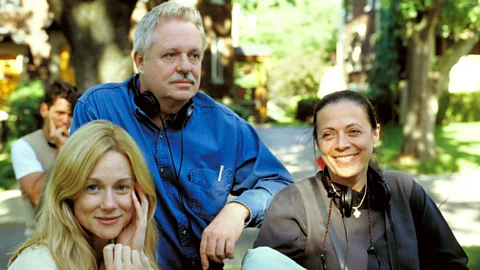 Alamy
AlamyWhat the series has meant to gay readers, in particular, over the years is incalculable: living within its pages has provided them with a community, even when real life may have not. I can certainly vouch for that. I first discovered the original Tales of the City book in my mid-twenties when, despite having moved to London, I felt alone and adrift in my sexuality, an anomaly within largely straight social circles. Alienated as I was, the books provided the ultimate escapism – to a world which didn’t exclude heterosexuality, but, amazingly, wasn't governed by heterosexual norms either.
Set in 2019, the new Netflix show is both very loosely inspired by Maupin’s final three books, and a sequel to the original TV adaptations of the 90s and early 00s, featuring some of the same lead cast, including Laura Linney as Mary Ann and the redoubtable Olympia Dukakis as Mrs Madrigal. And it’s brilliant to have Tales of the City back in all its eccentricity. Despite its shiny new streaming platform home, the series retains Maupin’s joyful, relaxed dorkiness – as ever, the character’s personal trials and tribulations are set against a gleefully far-fetched mystery plotline.
But while, in that respect, the new Tales of the City feels delightfully old-fashioned – without the self-conscious sophistication of many of today’s ‘prestige’ dramas – in other ways it is thoroughly modern. Key to that is a change of personnel: for while Maupin has consulted on the series, and served as an executive producer, he has entrusted the franchise to showrunner Lauren Morelli, who made her name on Netflix’s prison drama Orange is the New Black, alongside a “writer’s room of six people that represented every imaginable sexual and racial stripe… they made me look much cooler than I am,” he laughs.
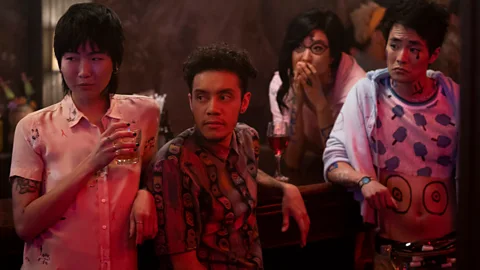 Netflix
NetflixAnd with that ing of the baton, the Tales of the City universe has expanded to become both more cross-generational and more diverse. While the show welcomes back the original motley crew, now uneasily reunited, there is equal emphasis on younger, queer characters, including Ellen Page as Shawna, Brian and Mary Ann’s sexually fluid adopted daughter, Josiah Victoria Garcia as trans male Barbary Lane resident Jake, and Charlie Barnett as Mouse’s younger boyfriend Ben.
The LGBT generation gap
But the new iteration does more than simply represent two generations of US queer culture: it makes the generation gap between them one of its themes. That’s most pointedly expressed in an electric scene, in which Mouse takes Ben to a dinner party. The African-American Ben is the sole person of colour amid a table of rich, white, older gay men, and when they start joking about ‘Mexican trannies’, he takes exception and calls them out on their offensiveness – only to enrage the assembled company.
“Why is your generation obsessed with labels?”, one man fires back. “Any so-called privilege that we happen to enjoy at this moment was won – and by that, I mean clawed tooth and nail – from a society that didn’t give two shits if we lived or died,” another fumes. “I will not be told off by someone who wasn’t fucking there.” In a single, intensely charged moment, it somehow manages to capture some of the deep divides within today’s LGBT community.
Walt Odets is a clinical psychologist who has specialised in working with gay men. His new book Out of the Shadows: Reimagining Gay Men’s Lives explores how complicated their lives still are, even within a supposedly modern and progressive Western society like the US. As part of this study, one notable trend he identifies is a dwindling sense of camaraderie between older and younger gay men – a side effect, in part, of their growing assimilation. “They used to have [more] shared issues that gave them more connection,” he says. “It was adversity that defined [their] identity for a very long time. Gay people were outsiders, which gave them a very defined [sense of] community, but that’s diminished to a significant extent.”
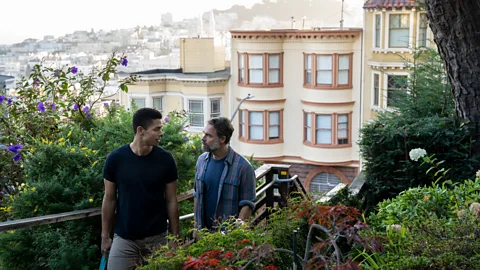 Netflix
NetflixBut, most of all, they’re divided by a sense of history. What one generation re painfully and profoundly, another may hardly be aware of – and nothing has left a greater impression on those who lived through it than the Aids crisis. The divide in experience is expressed movingly in the new Tales of the City when Ben discovers an old phone book of Mouse’s, stowed away in his cupboard, in which he has crossed out the numbers of all those friends he has lost.
Odets believes that gay men now live in “tripartite communities”, split into three distinct generations. There is the older group who lived through the HIV epidemic as adults, and stand as the survivors of a severe trauma; a middle group, who lived through the epidemic as children, and so, in Odets’s words, have “a kind of terrible identity that entangles being gay and HIV”; and a younger group who grew up in the wake of the discovery of effective antiretroviral treatments, and for whom HIV has therefore been a relatively marginal concern.
But if the issue of HIV no longer inspires the dread among gay men it once did, it nevertheless activates prejudices – in both young and old. Younger people may be less anxious about getting the disease, but they’re also paradoxically more stigmatising of those who have it. “I’ve heard a line many, many times from younger men which is ‘I’m not the kind of person who gets HIV’. Somehow they feel they’re protected from it,” says Odets. Equally, he adds, older men “feel some resentment for the liberties younger people can take” – thanks also, now, to the introduction of the highly effective HIV prevention pill PrEP. “What I hear from older men is ‘oh these younger guys are being so reckless with sex’. It’s much more complicated than a dismissal of people – it’s inherited from what [they went through].’”
How important is Pride?
Politics – or an apparent lack of it – is another issue that can split LGBT people along generational lines these days. We are now in Pride month, which marks the struggle for LGBT equality, past and present. This year’s is more momentous than ever, commemorating as it does the 50th anniversary of the Stonewall riots, when on 28 June 1969, of the LGBT community rose up following a police raid on New York gay bar the Stonewall Inn.
But the celebrations also tend to stimulate a debate over whether gay culture has, to its detriment, become increasingly depoliticised. Despite the proliferating amount of civil rights battles LGBT people have on their hands, particularly in the wake of the resurgence of far-right parties across the world, Pride events in the West have sold out, critics say, forgetting their activist roots and becoming little more than corporate blow-outs for an entitled generation.
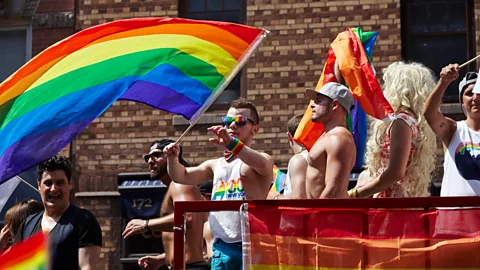 Alamy
AlamyThe new Tales of the City does its own bit to pay tribute to the battles of old. A framing device sees a young filmmaker, played by Girls’ Zosia Mamet, making a documentary about San Francisco’s queer past, while a special flashback episode explores Mrs Madrigal’s arrival in San Francisco, and hinges around the Compton’s Cafeteria Riot, a precursor to Stonewall in 1966 that was similarly an act of queer civil disobedience, led by trans women, in response to police harassment.
For all that Maupin has contributed to queer history, though, he thinks too much time can be spent looking backwards. “All of this focus on Stonewall 50 has encouraged a lot of publications to approach me asking ‘how do you think Pride will be celebrated in [another] 50 years?’ I think ‘oh my God, if it's being celebrated in 50 years, I [would] kill myself’ [though] I’ll already be dead. Because we don't need a celebration. You just need to get your shit together and accept yourself and accept others.”’
Odets agrees that the young’s ignorance of history should not be used as a stick with which to beat them. “Older men lived through a true trauma [and] people want that to be recognised to validate their own feelings. And I completely understand that. But I don’t think we can expect young people who didn’t live through the event to do that. I think we have to do that ourselves.”
Ignorance also runs in the opposite direction, of course. As time has gone on, ‘gay’ culture has become more and more multifaceted, with a whole spectrum of gender and sexual identities included under the ‘queer’ umbrella. At one point, in the new Tales of the City series, an older character jokes that she still has no idea what the term ‘queer’ means because “It’s like the price of oil – changes every day.”
What’s more, there is a much greater awareness of intersectionality among the young: that is, of how racism and sexism intersect with homophobia. But these developments can be treated with bafflement, even disdain, by older generations, not least older gay white men, who, for all the suffering they have undergone, have enjoyed much greater visibility and acceptance than other LGBT groups over the years.
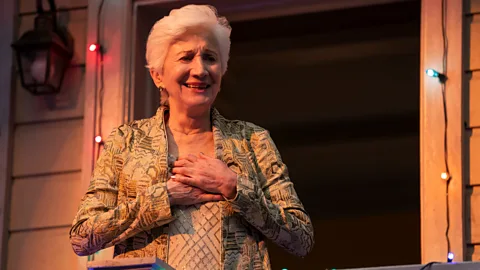 Netflix
NetflixDoes Maupin think a divide has opened up between white gay men and the rest of the community? “I think there’s tension between every group nowadays, to our detriment, which means we don’t get anything done because we’re too busy accusing each other of insensitivity,” he says, somewhat wearily. “We just have to talk to each other [and] be sensitive to their feelings.”
A portrait of togetherness
But what’s intoxicating about the new Tales of the City series is that ultimately, while it acknowledges all these tensions, it offers a portrait of togetherness like little else out there in popular culture. Old and young, gay and straight, cis and trans, black, brown and white: all congregate in the kooky commune of Barbary Lane in a way that still feels depressingly radical.
It is, above all, a portrait of ‘logical family’ – that’s the ingenious phrase Maupin himself coined in one of the novels to describe the informal family that many of us, particularly LGBT people, make as an alternative to our biological one; he subsequently used it as the title of his 2017 memoir. Four decades on from that first column, it is profoundly moving to see mother figure Mrs Madrigal still acquiring new ‘children’, to whom she opens her home and dispenses gnomic life advice.
Do younger gay people in the West, with all their relative freedoms, still need ‘parents’ like this? It’s interesting to note how in a feature entitled The Gay Generation Gap in New York Magazine back in 2009, the esteemed culture writer Mark Harris referenced Maupin when he declared that “today the notion of quasi-parental gay mentorship feels ancient, a trope out of Tales of the City.” Yet in Maupin’s experience, this phenomenon is far from dead. “I think it’s our instinct to find [those bonds] – with somebody who’s been there before you were there, and will tell you about it. I have a nephew who is twentysomething in San Diego, and I see him forming those relationships with older people.”
Odets, by contrast, thinks intergenerational dialogue has been on the slide – but, when LGBT battles are still far from won, despite superficially rosy developments such as gay marriage, we really need to foster it again.
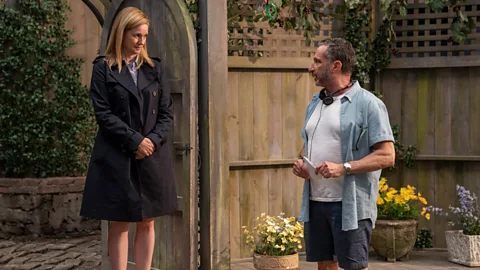 Netflix
NetflixOf course, Tales of the City is unashamed make-believe: now filmed on a soundstage in New York, Barbary Lane is a vast theatrical set that looks bigger and more unreal than ever. (“It may come as no surprise to you to know I had a dolls’ house when I was a kid,” says Maupin). Set against this is the reality of modern-day San Francisco, where, as with many cities, a multitude of factors, from exorbitant property prices to the proliferation of apps like Grindr, have led to queer venues disappearing and queer neighbourhoods shrinking.
But Maupin has never dwelled on the gloom. In fact, without giving too much away, the new series cleverly satirises the golden-age thinking that can go on when it comes to gay culture. Instead, as the franchise always has done, the show offers a vision of community that, if one step removed from reality, is something for both young and old to aspire to.
And as for Tales of the City’s future? While Netflix has commissioned the reboot as a one-off 10-parter, there’s nothing to say it couldn’t return for more series. Maupin himself says he would be “beyond happy” for it to continue. As would all those of us who have counted the residents of Barbary Lane among our greatest imaginary friends – and the next generation of fans who may hopefully follow in the wake of their fictional peers.
Tales of the City is released on Netflix on 7 June. Out of the Shadows: Reimagining Gay Men’s Lives by Walt Odets is out now.
If you would like to comment on this story or anything else you have seen on BBC Culture, head over to our Facebook page or message us on Twitter.
And if you liked this story, sign up for the weekly bbc.com features newsletter, called The Essential List. A handpicked selection of stories from BBC Future, Culture, Capital and Travel, delivered to your inbox every Friday.
